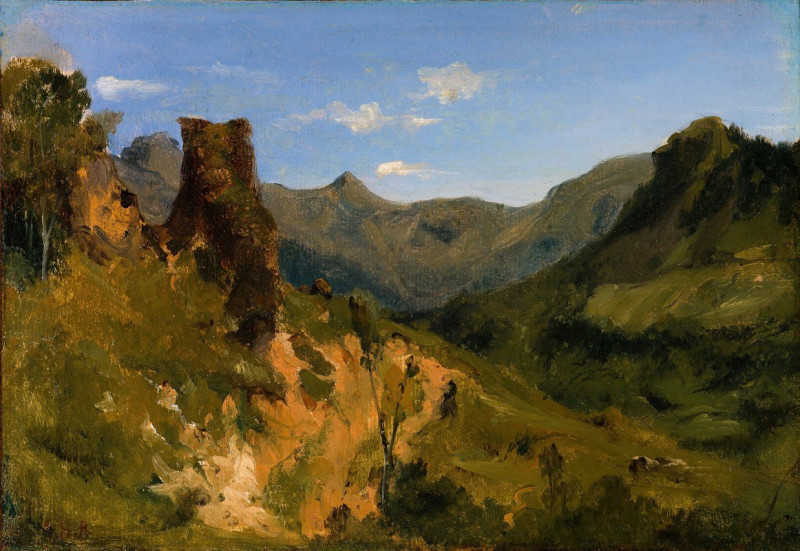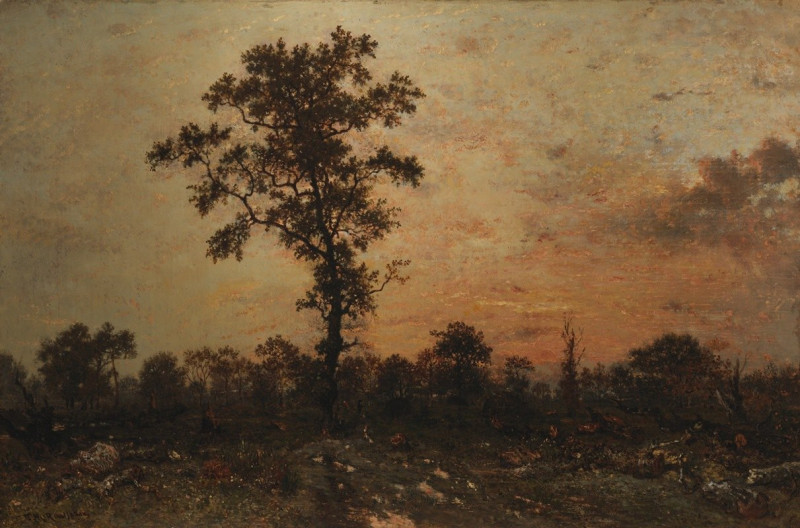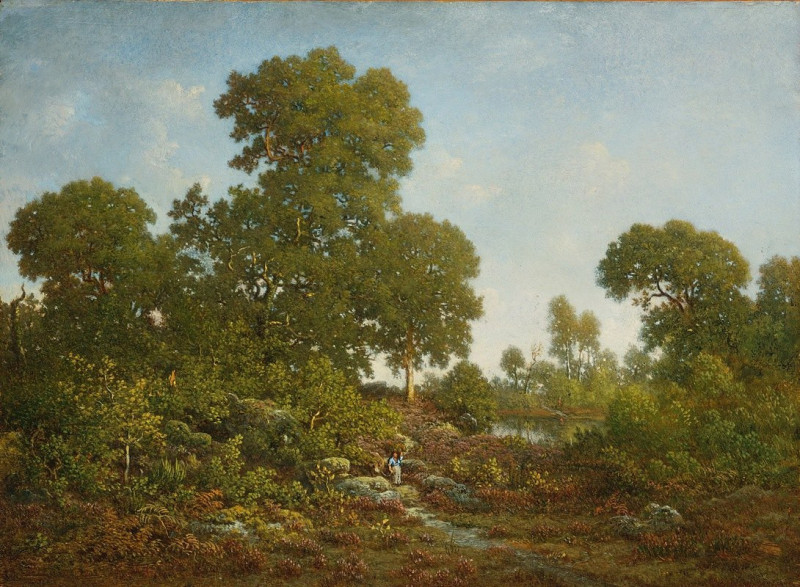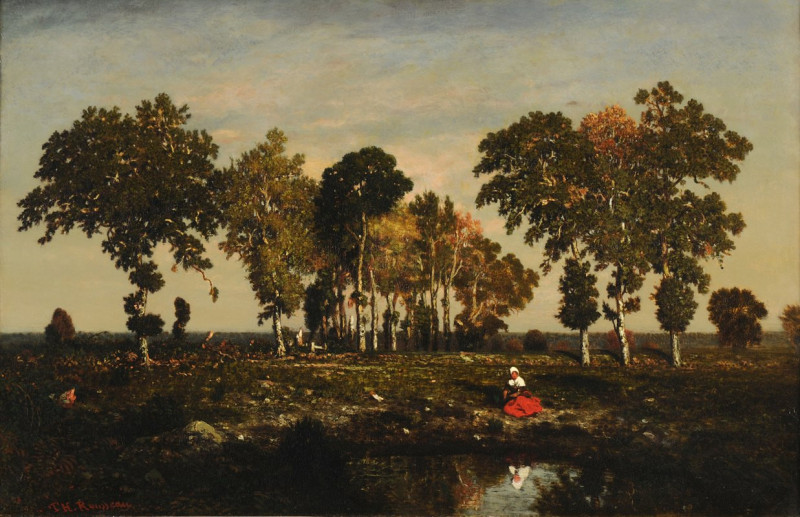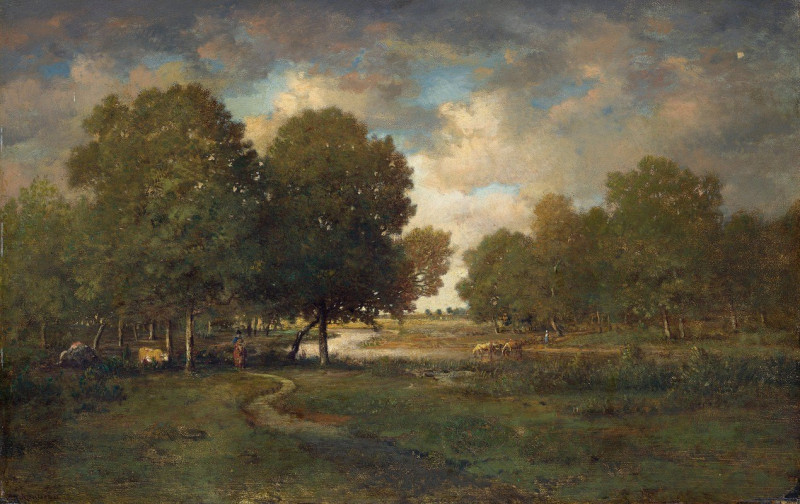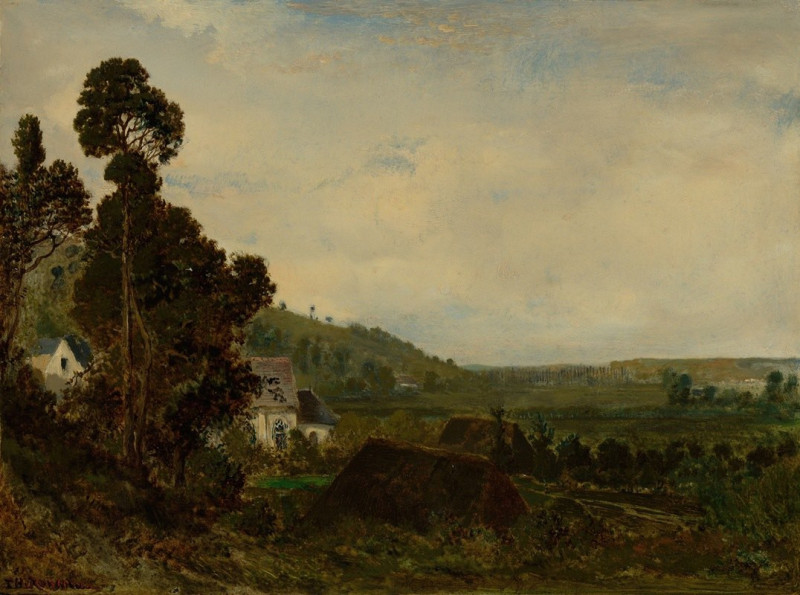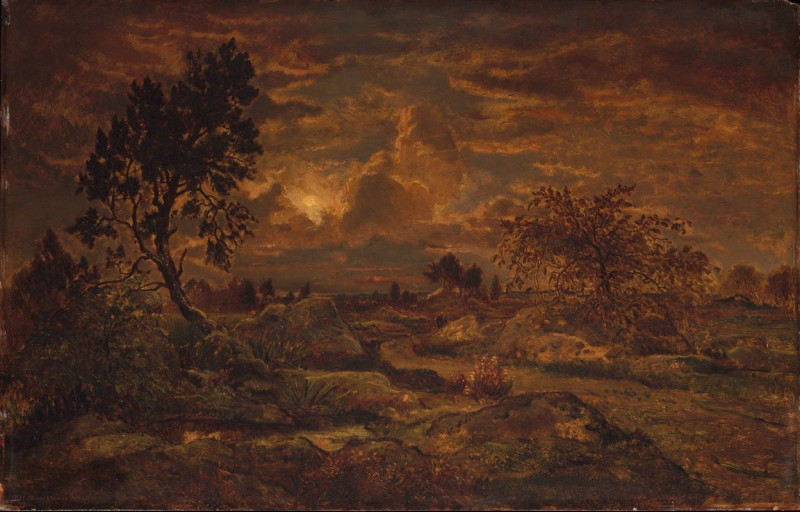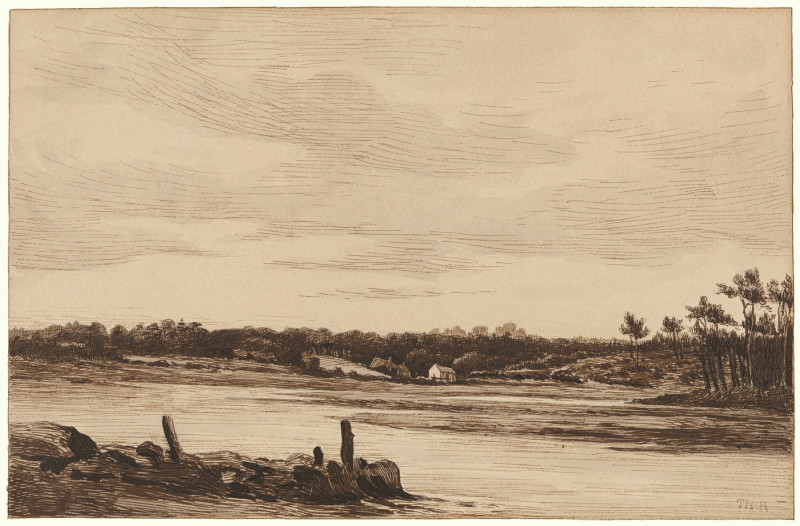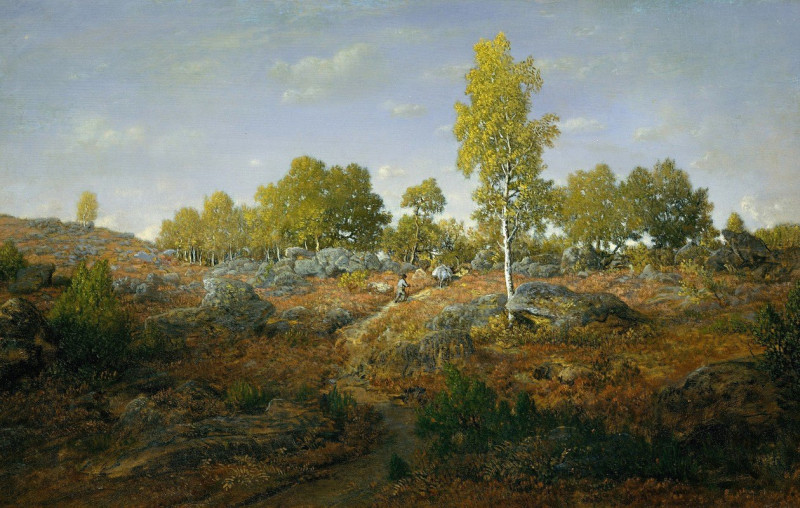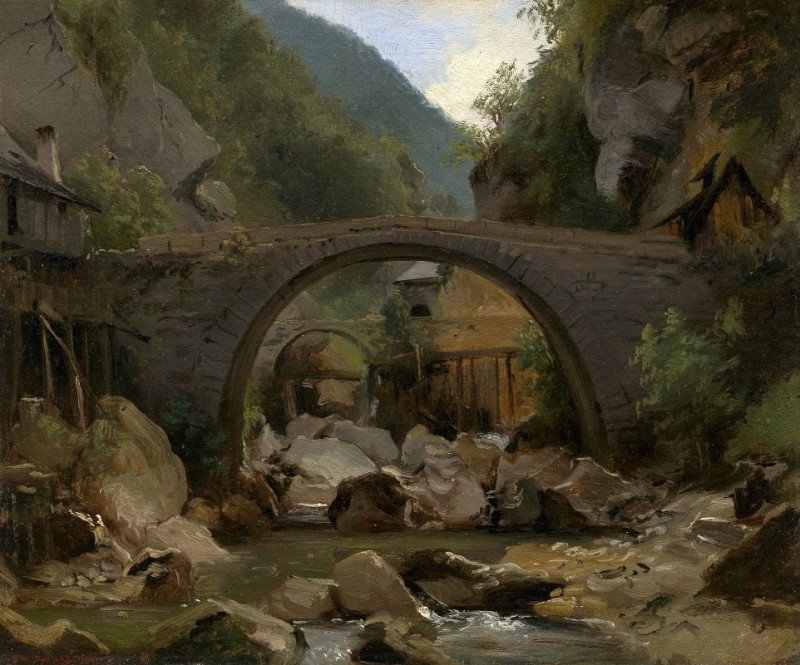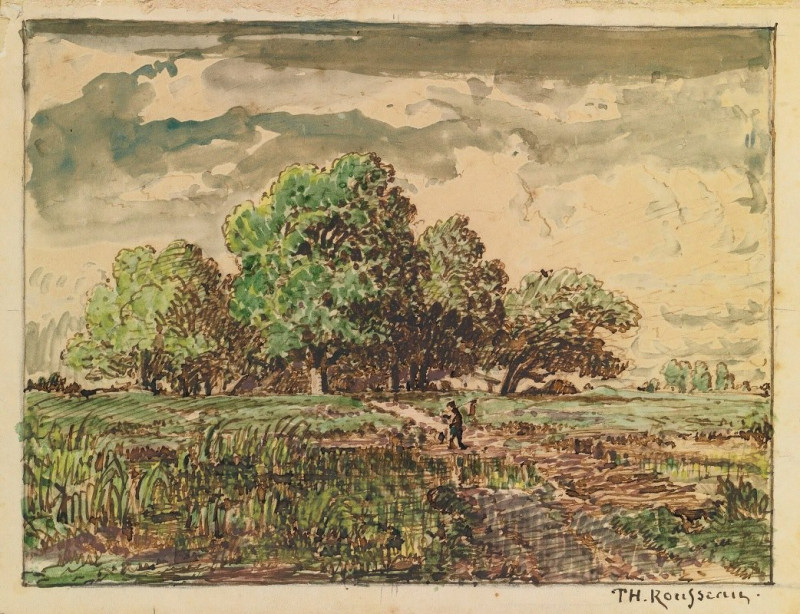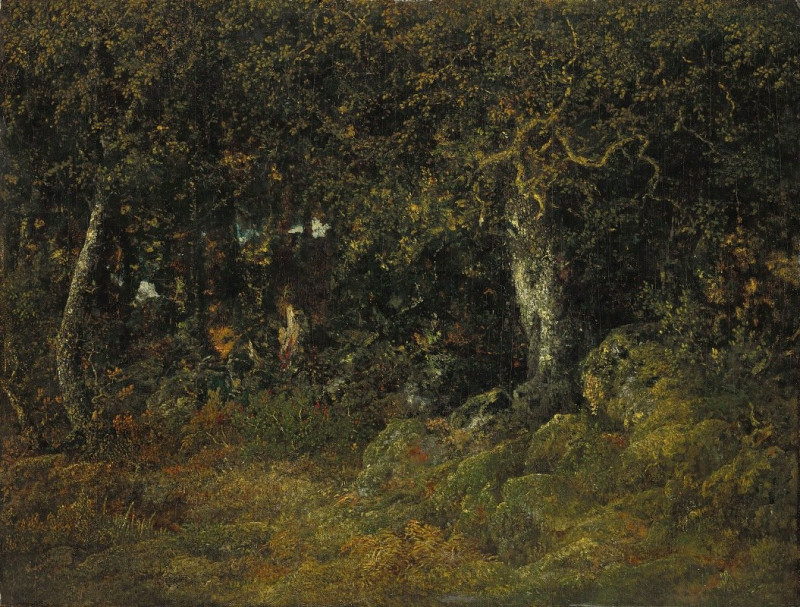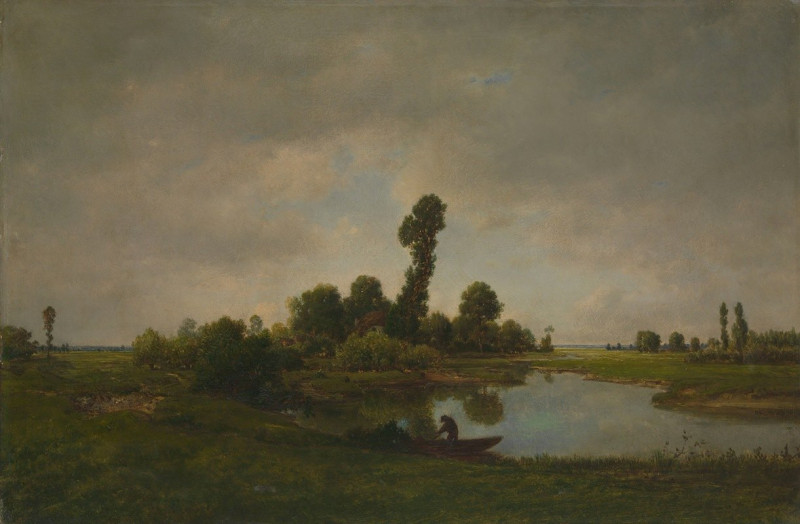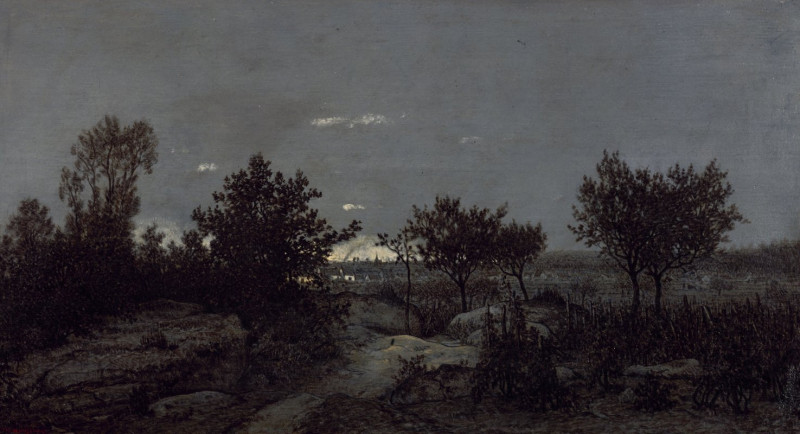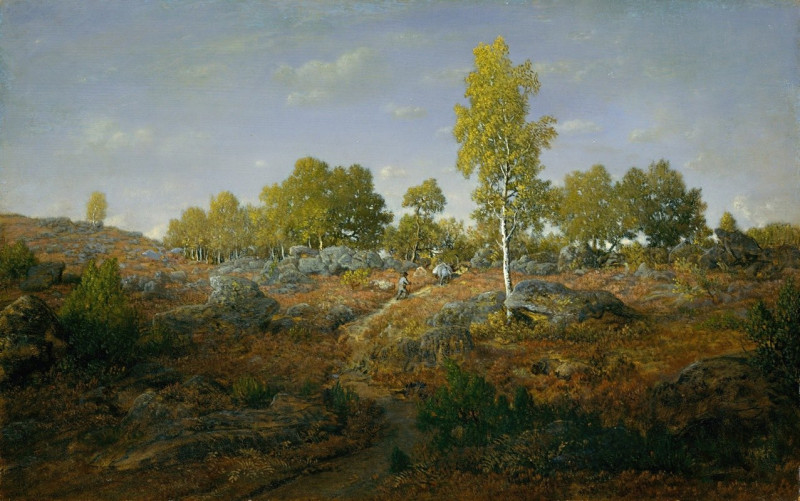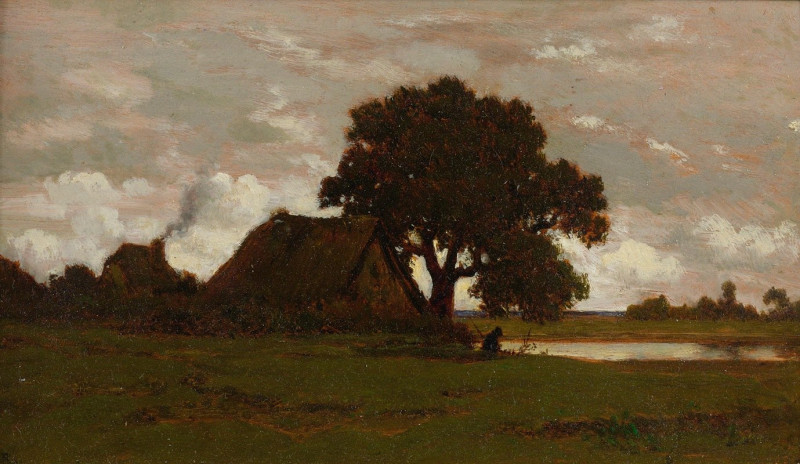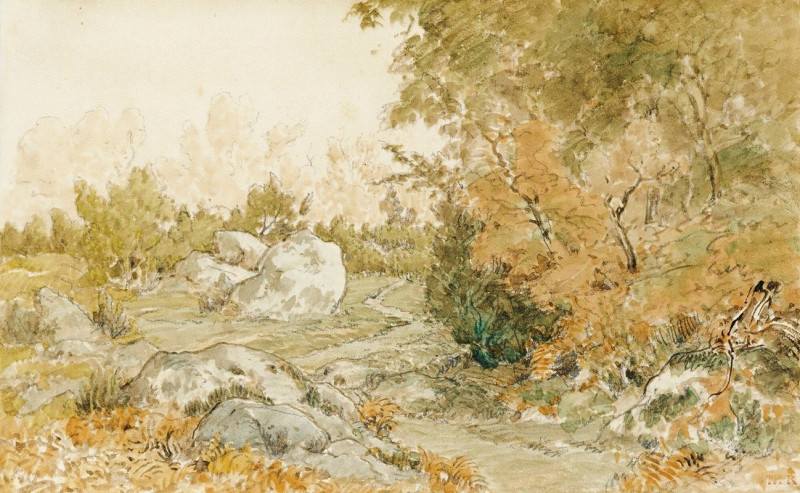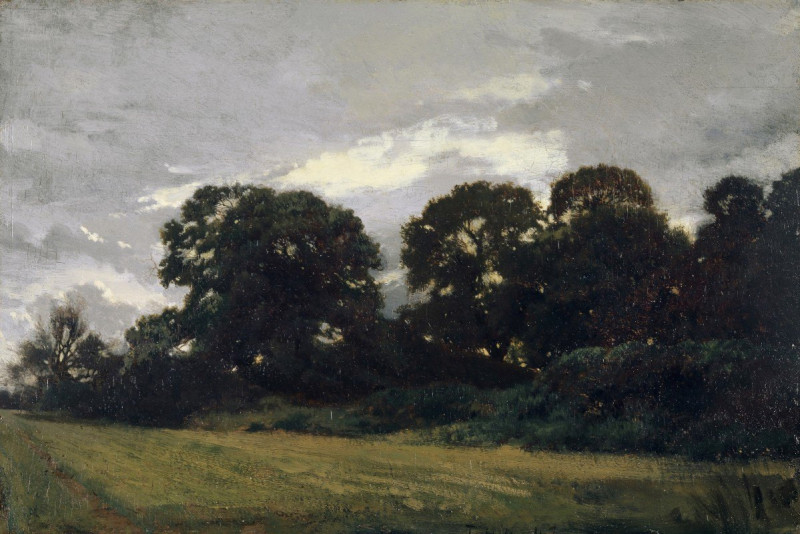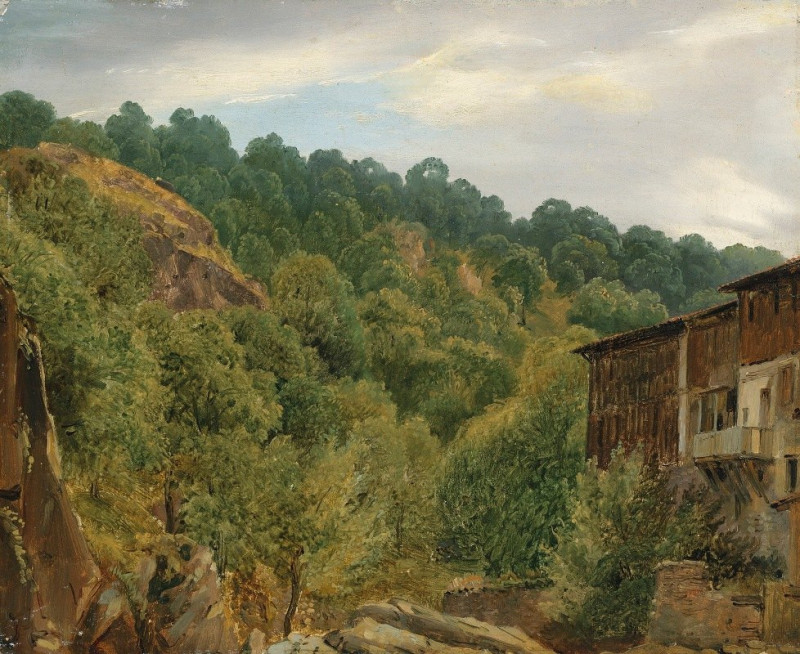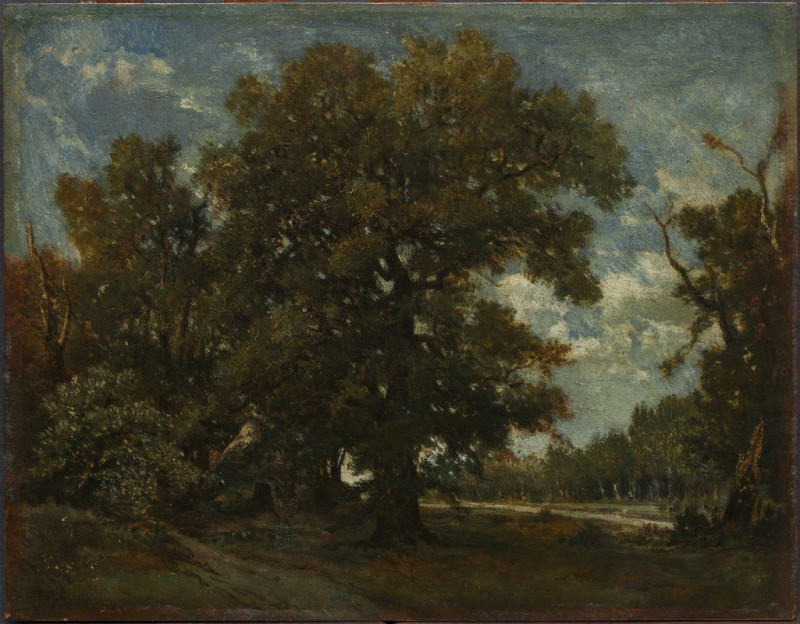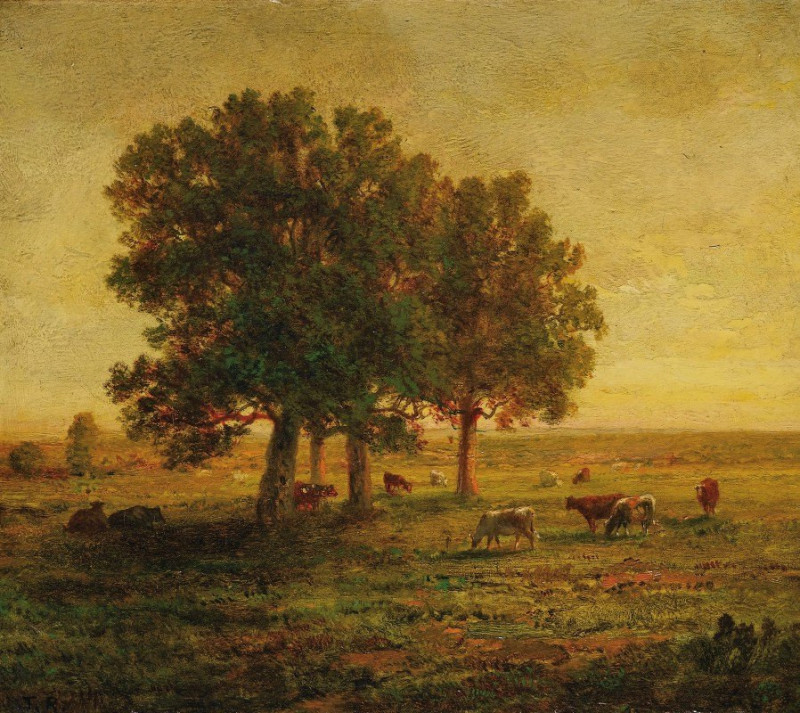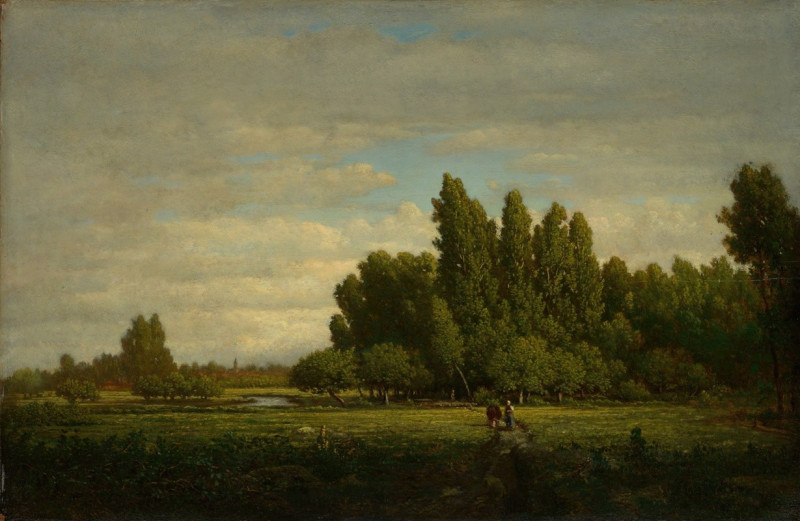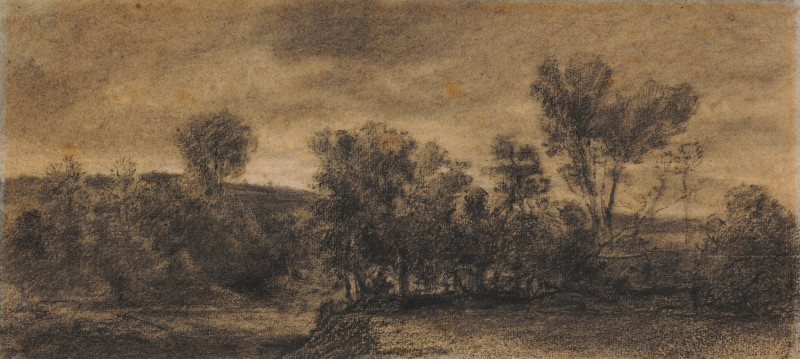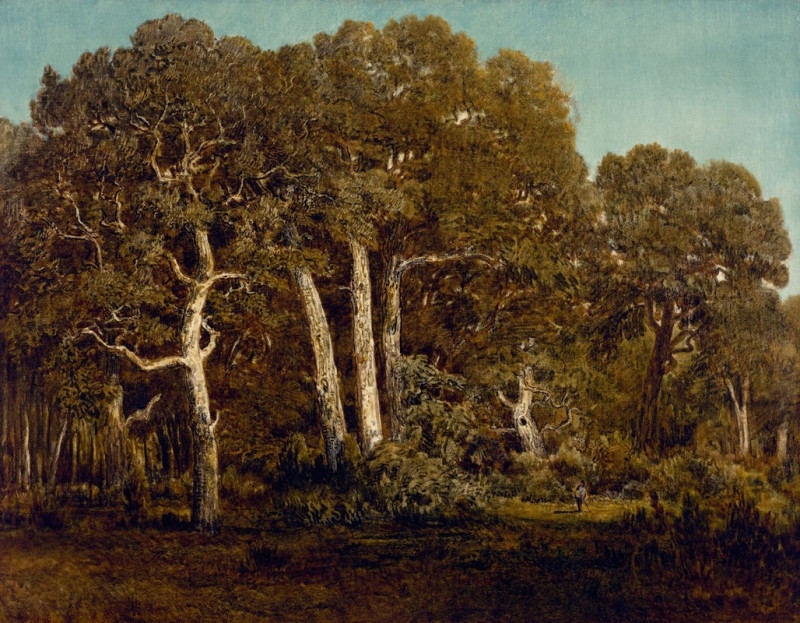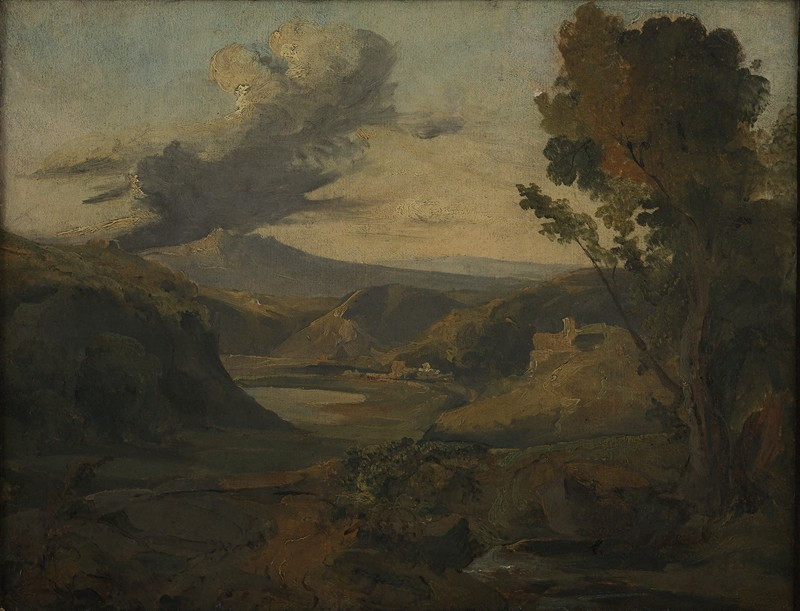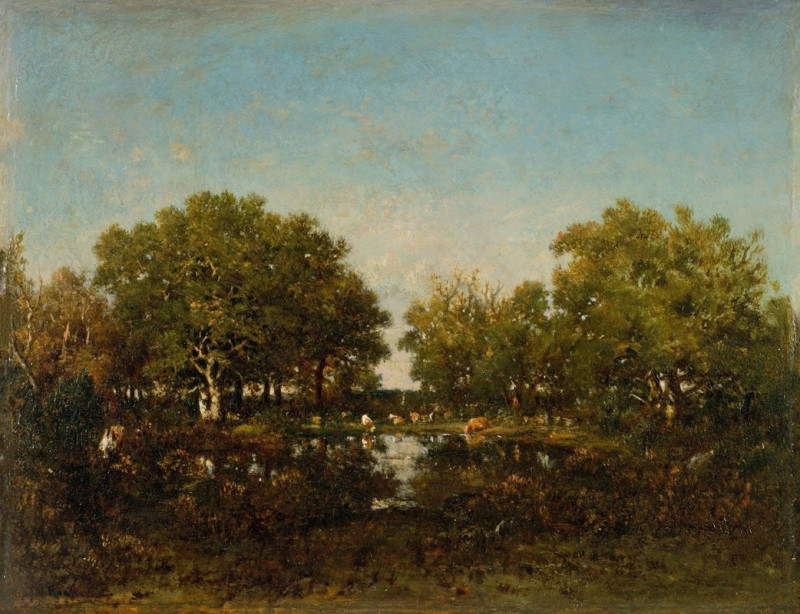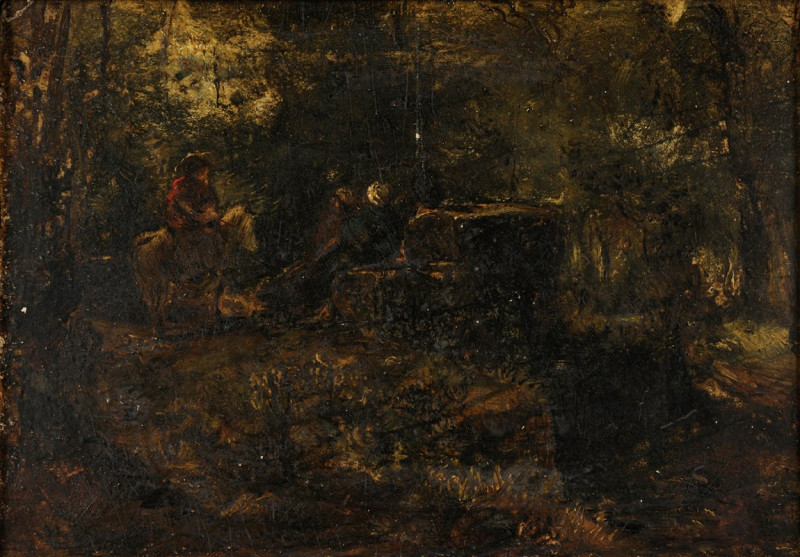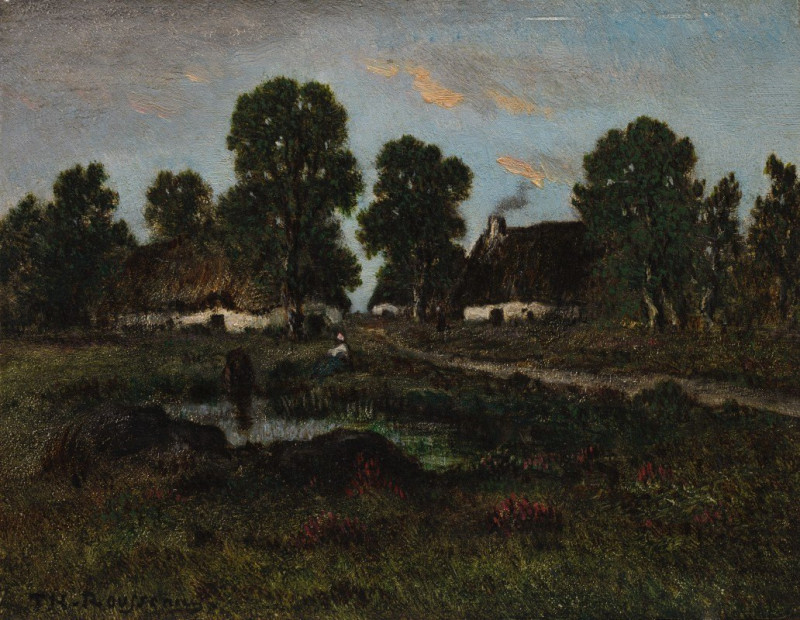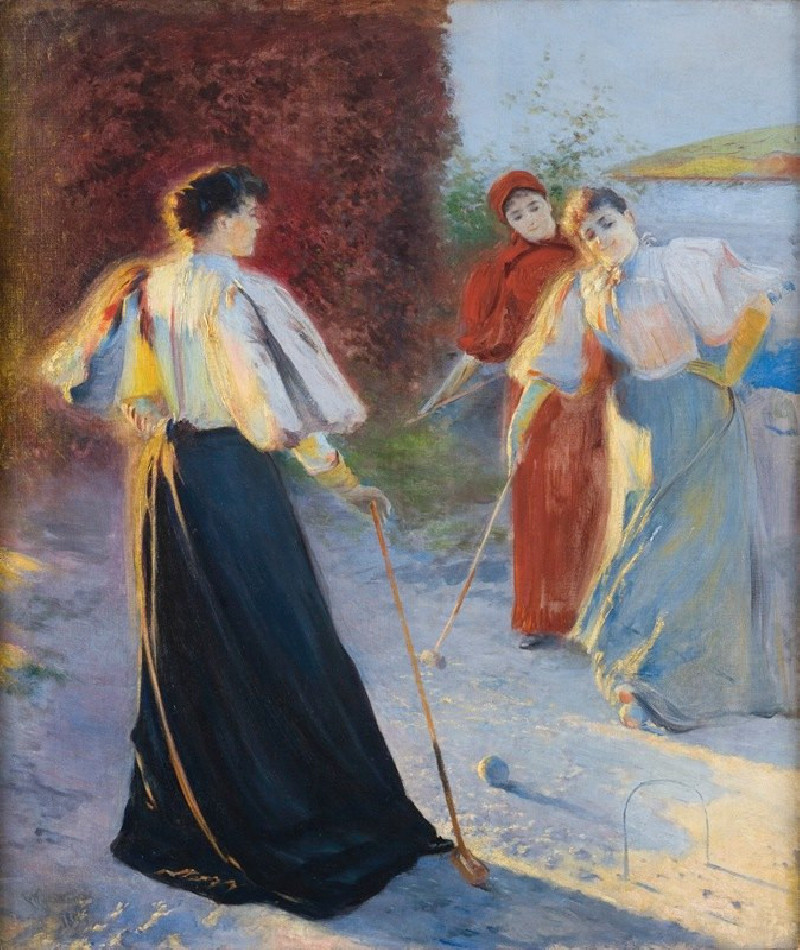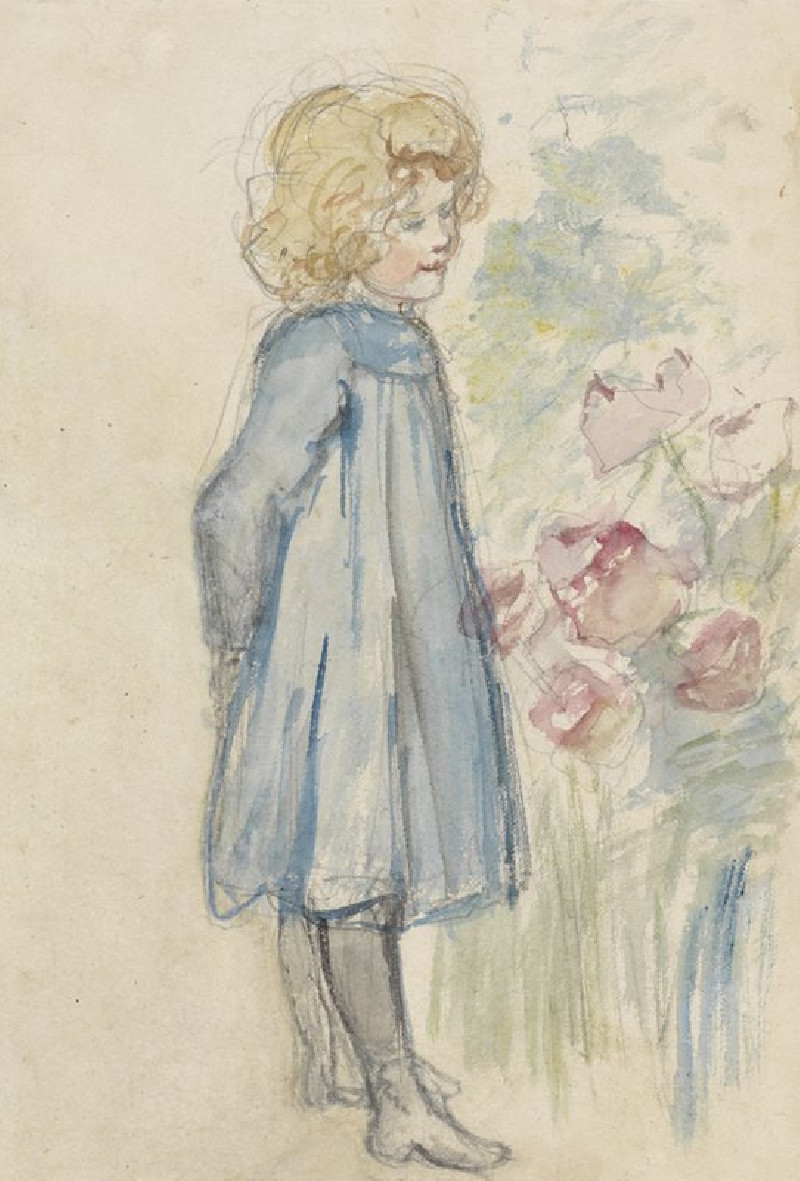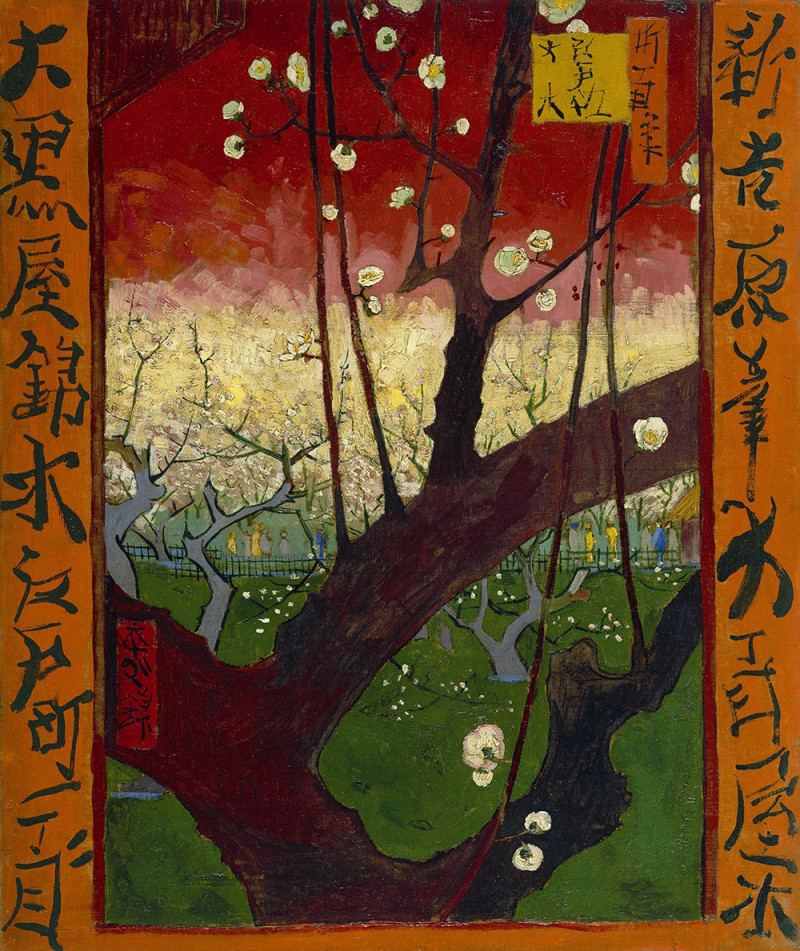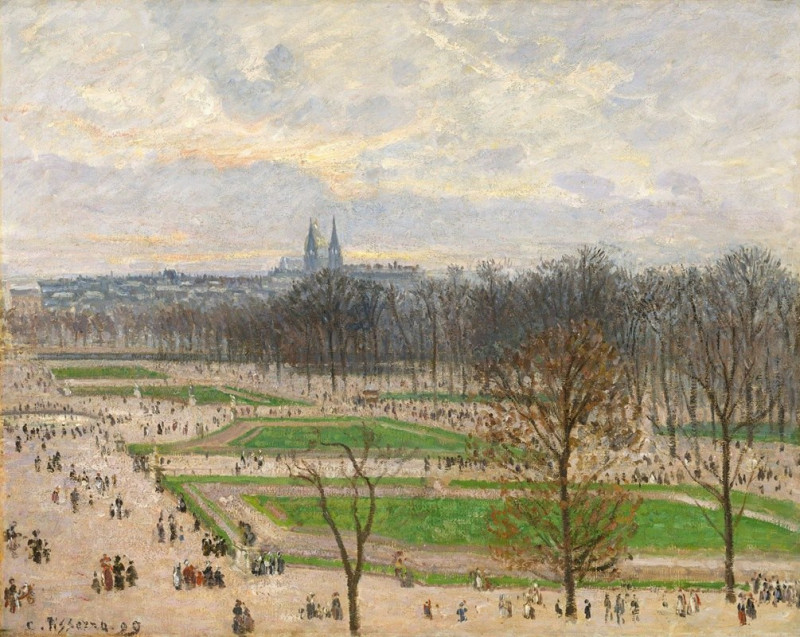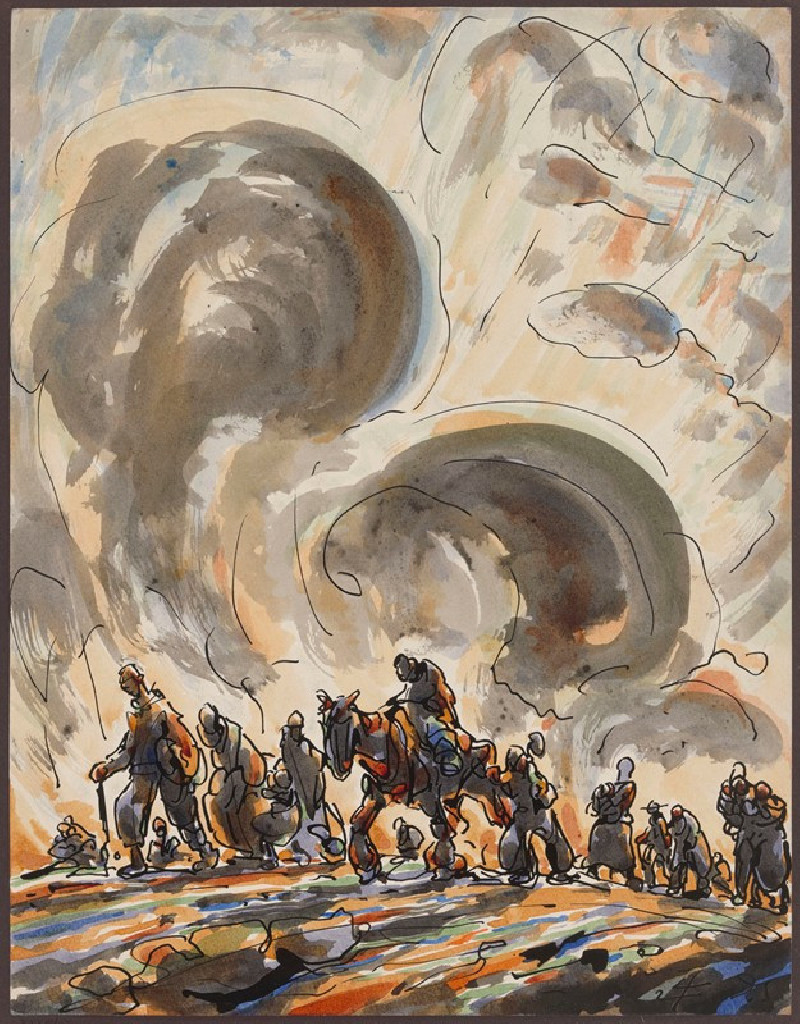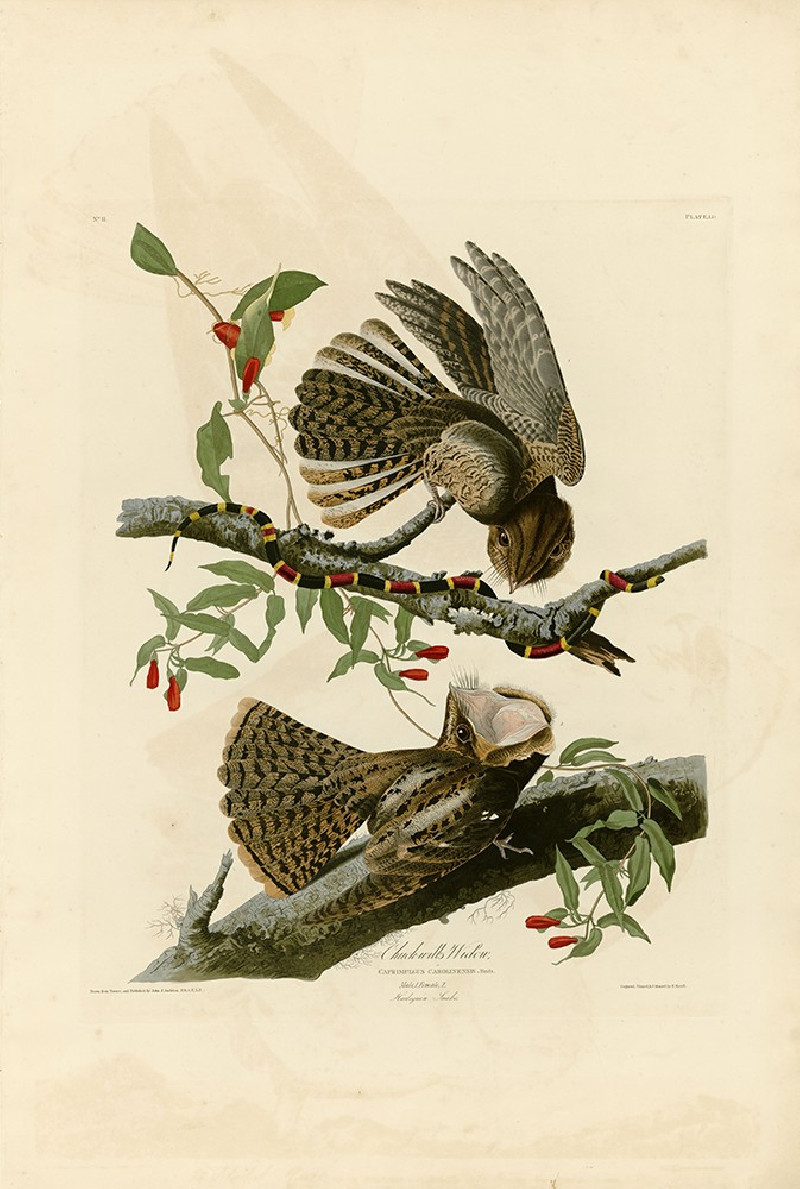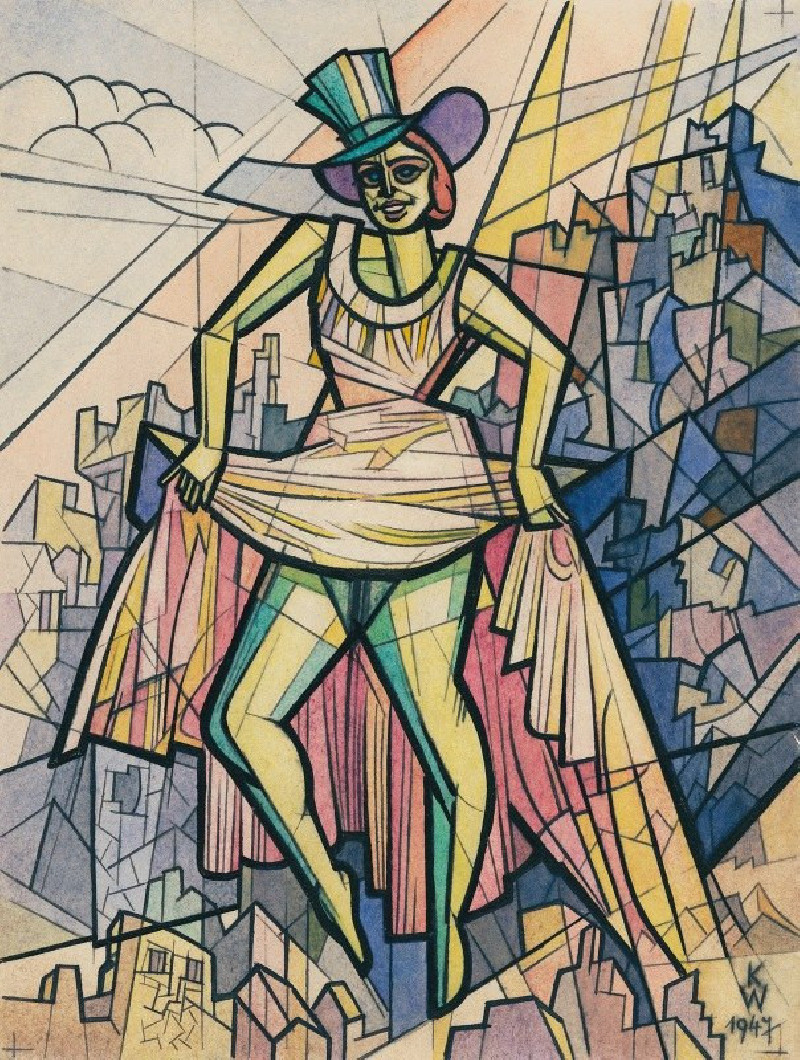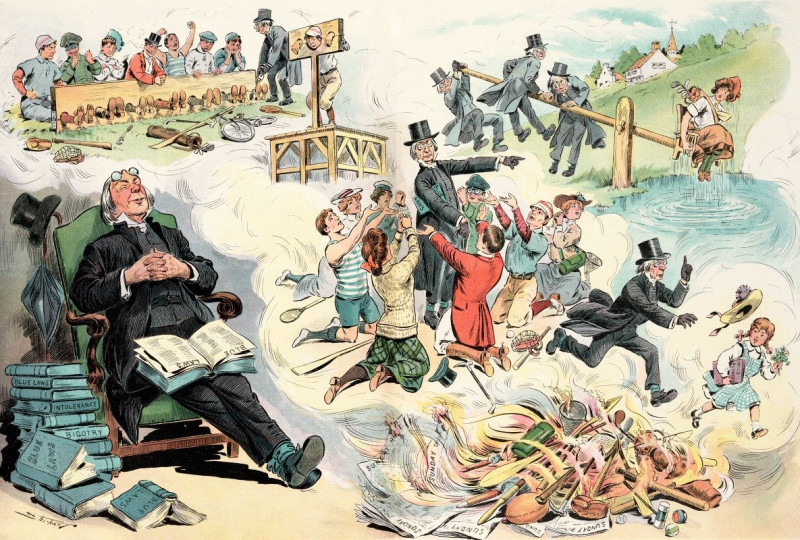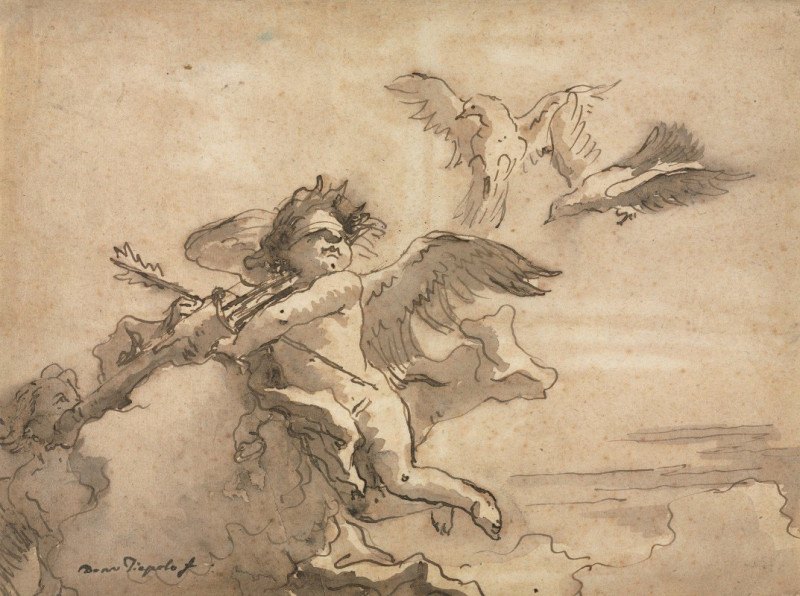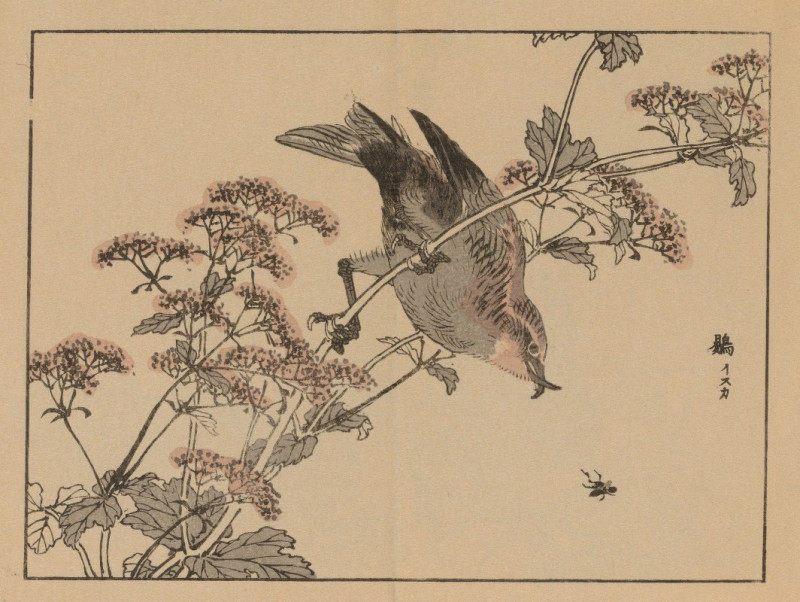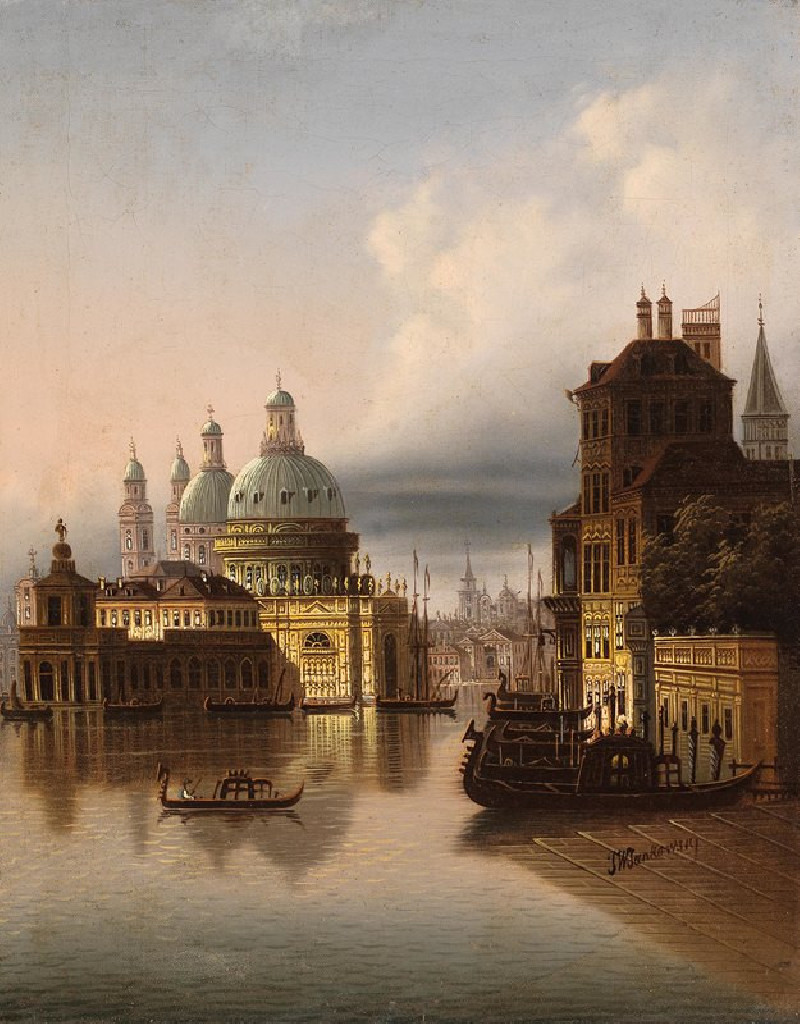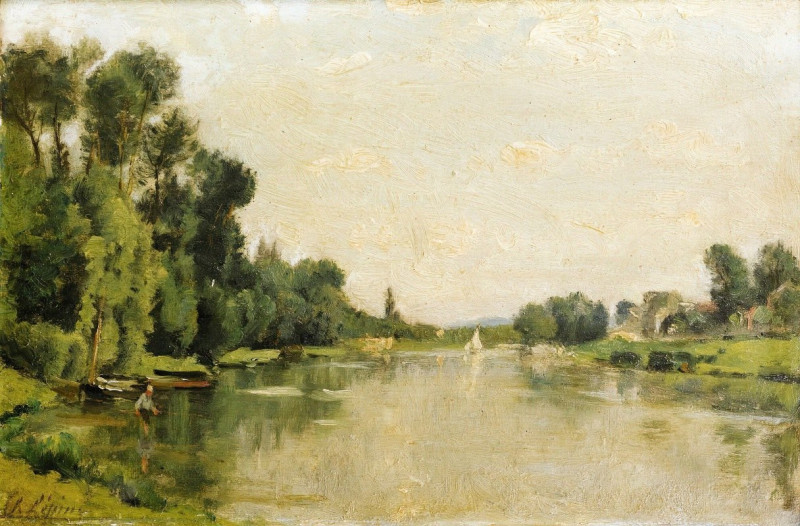Valley in the Auvergne Mountains (1830)
Technique: Giclée quality print
Recommended by our customers
More about this artwork
Valley in the Auvergne Mountains by Théodore Rousseau invites the viewer into a compelling depiction of nature's solemn beauty, capturing the serene yet rugged scenery of Auvergne in central France. Painted in 1830, this masterpiece showcases Rousseau's exceptional ability to convey the majesty of natural landscapes.In the foreground, the painting presents a vibrant yet rocky terrain, adorned with lush greenery, against a set of craggy cliffs and peaks that frame the composition. A winding path, slightly obscured by the rich, verdant flora, offers a glimpse of human presence amidst the wild. The background features more gentle hills, robed in a softer palette of greens and browns, which contrasts the pronounced rocky features in the forefront. Above, the sky, scattered with wispy clouds, complements the terrain with a calming blue that seems almost ethereal.Théodore Rousseau's attention to detail, from the texture of the rock faces to the dynamic interplay of light and shadow, evokes a sense of both tranquility and the enduring power of nature.
Delivery
Returns
Étienne Pierre Théodore Rousseau was a French painter of the Barbizon school.
He was born in Paris, France in a bourgeois family. At first he received a basic level of training, but soon displayed aptitude for painting. Although his father regretted the decision at first, he became reconciled to his son forsaking business, and throughout the artist's career (for he survived his son) was a sympathizer with him in all his conflicts with the Paris Salon authorities.

